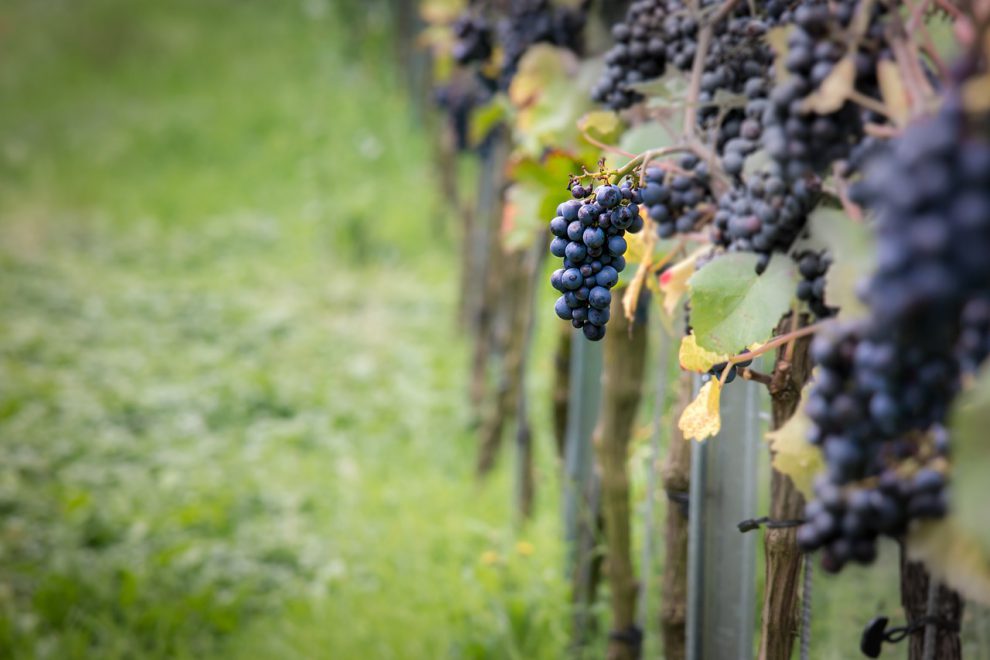Most people begin their French wine journey with products from the Bordeaux region, due to the region’s fame and the ready availability of its wines. The latter is because of an abundant supply, covering everything from budget-friendly everyday wines to iconic Premier Cru offers. Wine lovers will in likelihood not end their exploration of French wines at that point. Their next logical step would be to investigate the Burgundy (or in French, ‘Bourgogne’) region, which produces fine wines in a variety of styles distinct from those of Bordeaux.
Burgundy is one of the 3 most prominent wine regions of France, alongside Bordeaux and Champagne. Some of Burgundy’s best wines sell at extravagant prices: 9 of the 10 most expensive wines in the world1 are from Burgundy. A bottle of the highly regarded Domaine Leroy Musigny Grand Cru can retail at MOP230,000 on average.
The rule of supply and demand comes into play regarding the prices of Burgundy wines. Bordeaux produced 440 million litres of wine in 2020. Burgundy produces on average about one-third of this volume per year, i.e., 145 million litres. That translates to Burgundy producing 393 million fewer standard-size (75-centilitre) bottles of wine annually than does Bordeaux.
Meanwhile, demand for Burgundy wines has been soaring across the world – every second bottle of wine produced in Burgundy is exported. Although the region only accounts for 4.5 percent of production volume of all French appellation d’origine controlee (AOC) wine, it accounts for 21 percent of the revenue generated by the sector in the export market, according to data made available by the Bourgogne Wine Board.
 There are other factors supporting Burgundy wine prices. A key one is the unique styles of its wines. The reds are often described as elegant, graceful, and fine-flavoured. They are intensely fragrant and light in colour, with a high level of acidity but low in tannins. Burgundy whites can be equally impressive, with the best examples showcasing well-integrated notes of apple and citrus, complemented by sweet spices, toasted almonds and bread.
There are other factors supporting Burgundy wine prices. A key one is the unique styles of its wines. The reds are often described as elegant, graceful, and fine-flavoured. They are intensely fragrant and light in colour, with a high level of acidity but low in tannins. Burgundy whites can be equally impressive, with the best examples showcasing well-integrated notes of apple and citrus, complemented by sweet spices, toasted almonds and bread.
Many winemakers around the world admire Burgundy’s wines. Some have tried to replicate the profile of Burgundy wines, but typically without success. Many agree that it is difficult, if not impossible, to achieve.
Burgundy is in the east-central part of France. Its high latitude means it has the coldest climate of any major European region producing fine red wines. As a result, it offers wines with unique characteristics.
For consumers, it might be fair to say the Burgundy region is easy to understand, but difficult to master. The 2 key grape varieties in the region are Pinot Noir for reds and Chardonnay for whites. Wines are typically single varietal (i.e., using 1 grape variety only, as opposed to being a blend of several grape varieties, as is usual in Bordeaux).
Burgundy has 5 key subregions. Côte de Nuits is famous for its reds, while Côte de Beaune, Chablis, and Mâconnais are renowned for their whites. Côte Chalonnaise is the value king in Burgundy, offering quality sparkling wine among other types of wine.
Wine classification system
Burgundy gets more complicated when the classification system comes into play. There are 84 AOCs: the highest number in any French region2. These AOCs are further divided into 4 quality levels (in ascending order): Appellations Régionales, Appellations Village, Appellations Premiers Crus, and Appellations Grands Crus.
Appellations Régionales (Regional Wines) refer to the entry-level regional wines made using grapes sourced from anywhere in Burgundy. They represent over half of the production volume in the region, and are often the most accessible pricewise: around MOP150 per bottle at retail level in Macao. The reds and the whites are typically fresh and light in style, without the complexity found at higher level. They are meant for immediate consumption.
Appellations Village (Village Wines) are produced in 44 specific villages, also known as ‘communes’, and each village has its own AOC status. These wines reflect better the uniqueness of the various terroirs they spring from, and have a tad more complexity. They are nonetheless ready-to-drink, like Appellations Régionales wines.
Appellations Village account for 37 percent of Burgundy’s production volume. Their quality and price vary among producers. There are hidden gems to be discovered (starting from MOP300) but wines from the more reputed villages such as Meursault, Puligny-Montrachet, Volnay, and Gevrey-Chambertin are often priced higher.
The real charm of Burgundy begins to shine at the Appellations Premiers Crus level, which specifies the vine plots (known as climat in French) within a village where the grapes are grown. There is a total of 640 climats, each with its own microclimate and specific geological conditions. The best climats benefit from adequate sun exposure, thus ensuring proper ripening of the low-yield grapes, contributing to the concentration of the wines produced. Accounting for only 10 percent of annual production volume, Premiers Crus never come cheap – expect to spend at least MOP600 for a bottle – but are worth the money as you will be rewarded by a greater level of aromatic intensity, and a finer and richer texture on the palate than is found with wines from lower levels. On the label you will see “Premier Cru” or “1er Cru” in addition to the village name.
Finally, if money is no object, do not hesitate to go for the crème de la crème of Burgundy fine wines: the Appellations Grands Crus. These represent only 1 percent of all wines in the region, produced in only 33 climats. These wines are rarely available in Macao shops, especially those from legendary names such as Domaine de la Romanée-Conti or Domaine Leflaive, as production is very limited: in some cases, only a few thousand bottles annually.
Most of the production is allotted to designated buyers with a long history of trading direct with the producers. One can surely find some of these wines in fine dining establishments in Macao, but at prices that can be as much as six figures for a single bottle.
As with Bordeaux, the weather in Burgundy can vary year-to-year, influencing the quality of that vintage. This year Burgundy vineyards suffered severe damage from frost and hail, with the region’s total output expected to fall by almost half compared to 2020. A vintage chart3 is always a useful reference before making any purchasing decision on the more expensive Burgundy wines.
References:
1 The Wine-Searcher – The world’s top 50 most expensive wines:
https://www.wine-searcher.com/most-expensive-wines
2 The Bourgogne Wine Board (BIVB) – “Bourgogne wines: decoding the AOCs”:
https://www.bourgogne-wines.com/our-wines-our-terroir/decoding-the-aocs/bourgogne-wines-decoding-the-aocs,2467,9263.html
3 Vintage charts of Burgundy and other French regions by the Wine Spectator Magazine:
https://www.winespectator.com/vintage-charts/region/france
This month’s recommendation:

- Name of wine: Louis Jadot Bourgogne Pinot Noir Couvent des Jacobins 2019
- Region/country of origin: Bourgogne AOC, France
- Grape variety: Pinot Noir
- Price: HKD168
- Available at: RNG Wine (https://www.rngwine.com)
- Official product details: https://www.louisjadot.com/en/wines/7231-bourgogne-couvent-des-jacobins-2
- Tasting notes: Pinot Noir is a fragrant varietal, and this wine does not disappoint, by opening with the grape’s signature aroma of red fruits – in this case fresh and plump berries, almost candy like. On the palate, it has a silky, smooth texture, heavily exhibiting red fruits, blood orange and chocolate, and with gentle tannins. It is a harmonious and balanced medium-body wine designed to be drunk when it is young. Despite being an entry-level wine in the line-up of the producer, it can showcase the typical elegant structure of Burgundy wines, complemented by a deliciously lingering finish.
- The verdict: There are hardly any bargains from Burgundy due to the ever-increasing demand from consumers around the world and the relatively small production volume. But wine lovers may still find good-value options by going after entry-level wines from venerable brands. That is the case with this wine from Maison Louis Jadot, one of Burgundy’s top négociants: it can provide a taste of what the region has to offer at a reasonable price. It may lack the complexity and aging potential of the higher-priced wines in the line-up of the brand, but it faithfully demonstrates the uniqueness of Burgundy wines made from Pinot Noir. The winemaker recommends pairing this wine with one of a variety of hearty and flavourful dishes, including grilled tuna or salmon, tataki beef, a terrine of rabbit or pork, moussaka, veal liver, fondue bourguignonne, tartar steak, roasted veal, duck breast salad, roasted guinea fowl, or hard cheese.
By Mr. Oscar Man Cheng Ho
IFTM Lecturer in Wine Studies
WSET (Level 3) Qualification
Mr. Ho has since an early age been immersed in – and fascinated by – the world of wines. As a child, he was frequently to be found at his family’s restaurant, one of the city’s oldest establishments serving Portuguese fare and, of course, wine. It was only natural that his first job was in the wine trade. Mr. Ho joined IFTM as a lecturer in 2005 and has latterly taught wine-related courses. He also provides training and support to the student-led IFTM Wine Appreciation Club.









